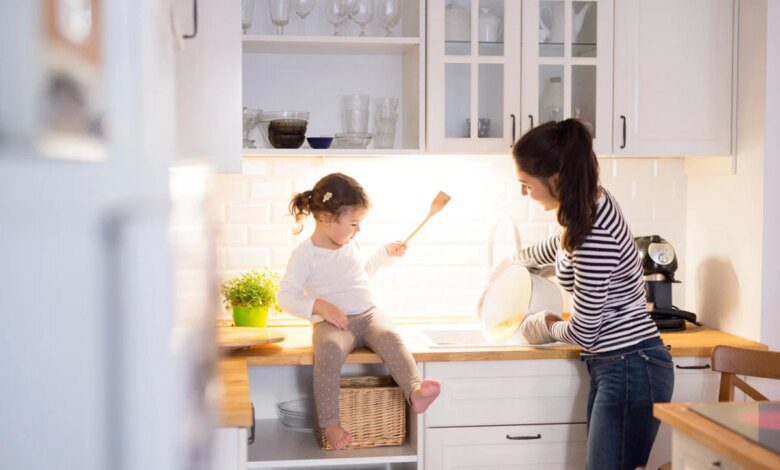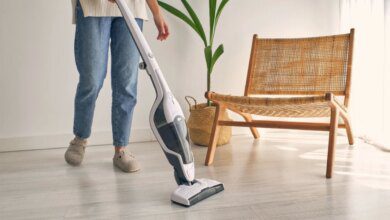
How to ensure low energy consumption at home: 3 ways at your fingertips
Achieving low energy consumption does not necessarily mean imposing restrictions on your lifestyle.
Next, you'll learn how to achieve low energy consumption without much effort.
The content of the article
1. Choose an efficient lighting system
Choosing an efficient lighting system can be the first step to optimizing your home's energy consumption. The easiest and most convenient way to do this is to use LED bulbs instead of regular incandescent bulbs. If you're wondering what the benefits are, here are the most important ones, according to the Energy Policy Group (EPG):
● An LED lamp consumes approximately 6 times less electricity than an incandescent lamp. While an LED lamp consumes 10 Wh, a regular lamp consumes 60 Wh.
● LEDs consume up to 80 % less energy than traditional incandescent lamps.
● LED lamp life is approximately 50,000 hours, which is equivalent to the average life of 50 incandescent lamps.
When it comes to LED bulbs, there are various myths circulating in the public space and it is important to be aware. Here are two examples:
1. “LED lamps are not bright enough”
Many people think that the brightness of a light bulb is determined by the number of watts it has. According to EPG experts, this is incorrect because watts refer to the power used by a light bulb to generate light, and the light output of a light bulb is measured in lumens. So an LED bulb and an incandescent bulb may have the same number of lumens, so produce the same amount of light, but the difference is that LED bulbs use fewer watts than incandescent bulbs.
2. “Replacing incandescent bulbs with LEDs is expensive.”
Using LED bulbs is an investment that will help reduce your home's energy consumption and protect the environment in the long run. As I said, the lifespan of an LED bulb is 50,000 hours, while the lifespan of an incandescent bulb is around 1000 hours, which means that LED bulbs don't need to be replaced as often, according to the EPG. Find out everything about the consumption of LED lamps and make the right choice!
2. Get used to responsible consumption
Adopting responsible consumption habits can help you optimize energy efficiency in your home without much effort. Here are some examples of how you can achieve low energy consumption in the kitchen, according to the Energy Policy Group (EPG):
● Thaw food before cooking to reduce cooking time.
● Use lids to retain heat inside containers you use during cooking.
● If you wash dishes by hand, turn on the water only enough to rinse it, do not leave it on all the time.
● Place the refrigerator in a ventilated area and keep it away from heat sources to prevent additional energy consumption.
Now that you've learned what small steps you can take to reduce energy consumption in the kitchen, here's what you can do to achieve the same effect in the bathroom:
● Turn off the water when brushing your teeth or hands, and turn it on only when you need to rinse your mouth.
● Replace cracked faucets or pipes to avoid water loss.
● Reduce your shower time and only fill the bathtub halfway when bathing.
3. Choose an efficient heating system
There are several heating systems that can be used to achieve the desired thermal comfort in your home: underfloor heating systems, central heating or radiators, but one of the best systems in terms of energy efficiency is a condensing gas boiler system. The operating principle is the same as that of a conventional power plant. The difference is that a condensing gas installation recovers part of the heat that would have been rejected outside during the combustion process.
To maximize the energy benefits of your boiler, you can also use a smart thermostat, which makes it easier to control the temperature in your home. The thermostat automatically starts or stops the boiler when the temperature drops or exceeds the set value. In this way, the optimal temperature is maintained, and the boiler will not work constantly, but only when necessary. For example, the thermostat allows you to set the temperature lower at night or when no one is home, which can result in energy savings of up to 30%, according to the EPG.
Also, to maintain the functionality of the heating system, radiators must be periodically cleaned and ventilated. It is important that radiators radiate heat, so they should not be covered with clothing or cluttered with large pieces of furniture. So the score can be reduced to 20%.
At the same time, by replacing old thermostatic heads with modern ones, you can achieve energy savings of up to 7%. Compared to manual radiator mixers, thermostatic ones provide energy savings of up to 25%.
Using LED bulbs, adopting healthy consumption habits and choosing an efficient heating system are some of the main aspects to consider if your goal is to achieve low energy consumption in your home.
Photo source: Shutterstock.com














